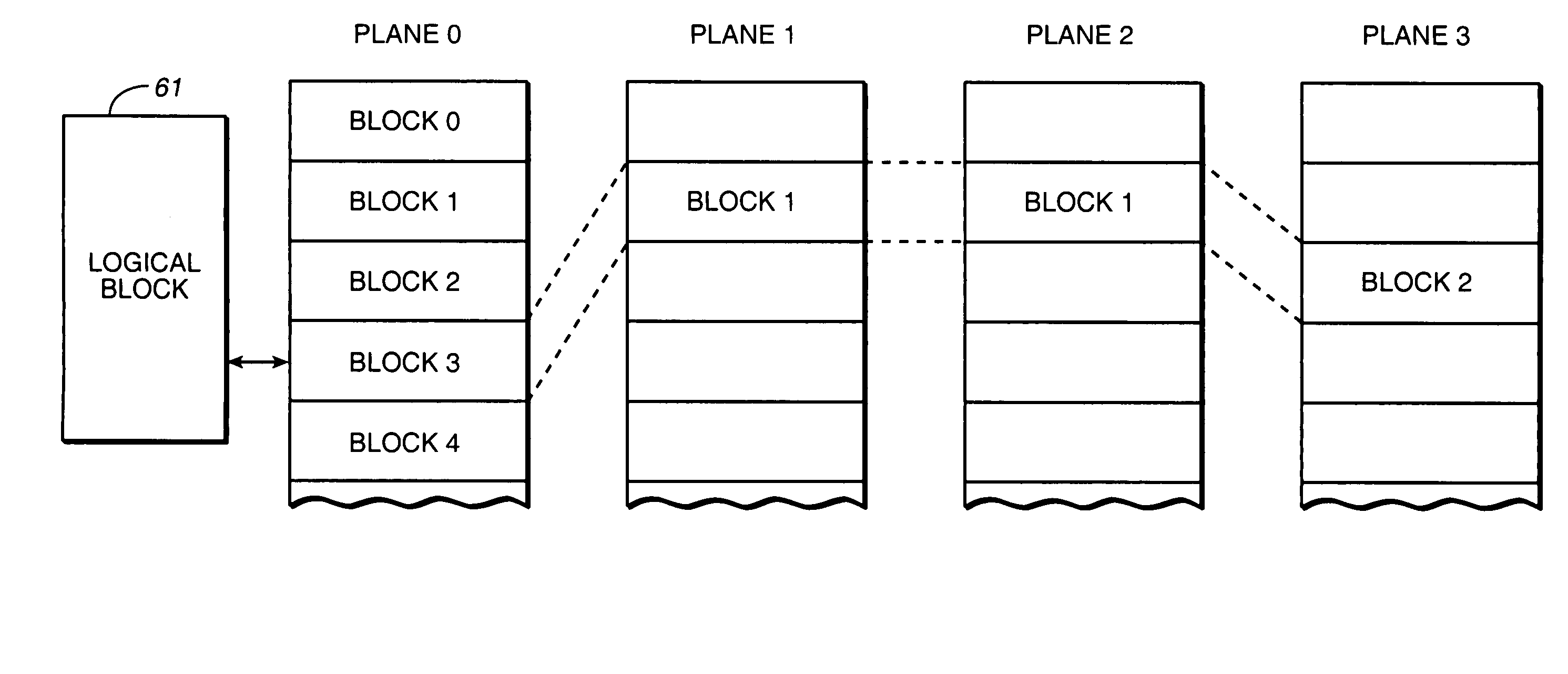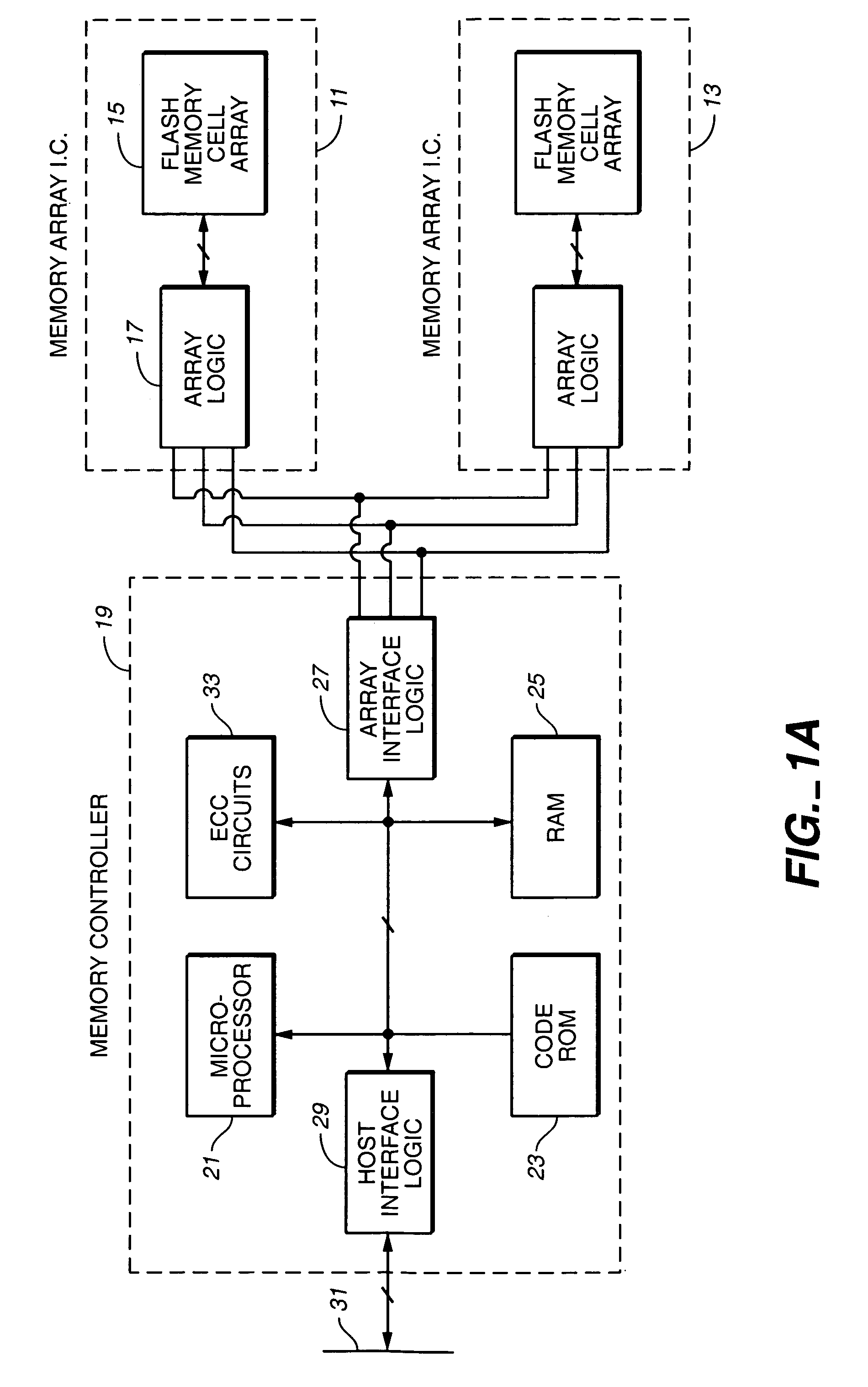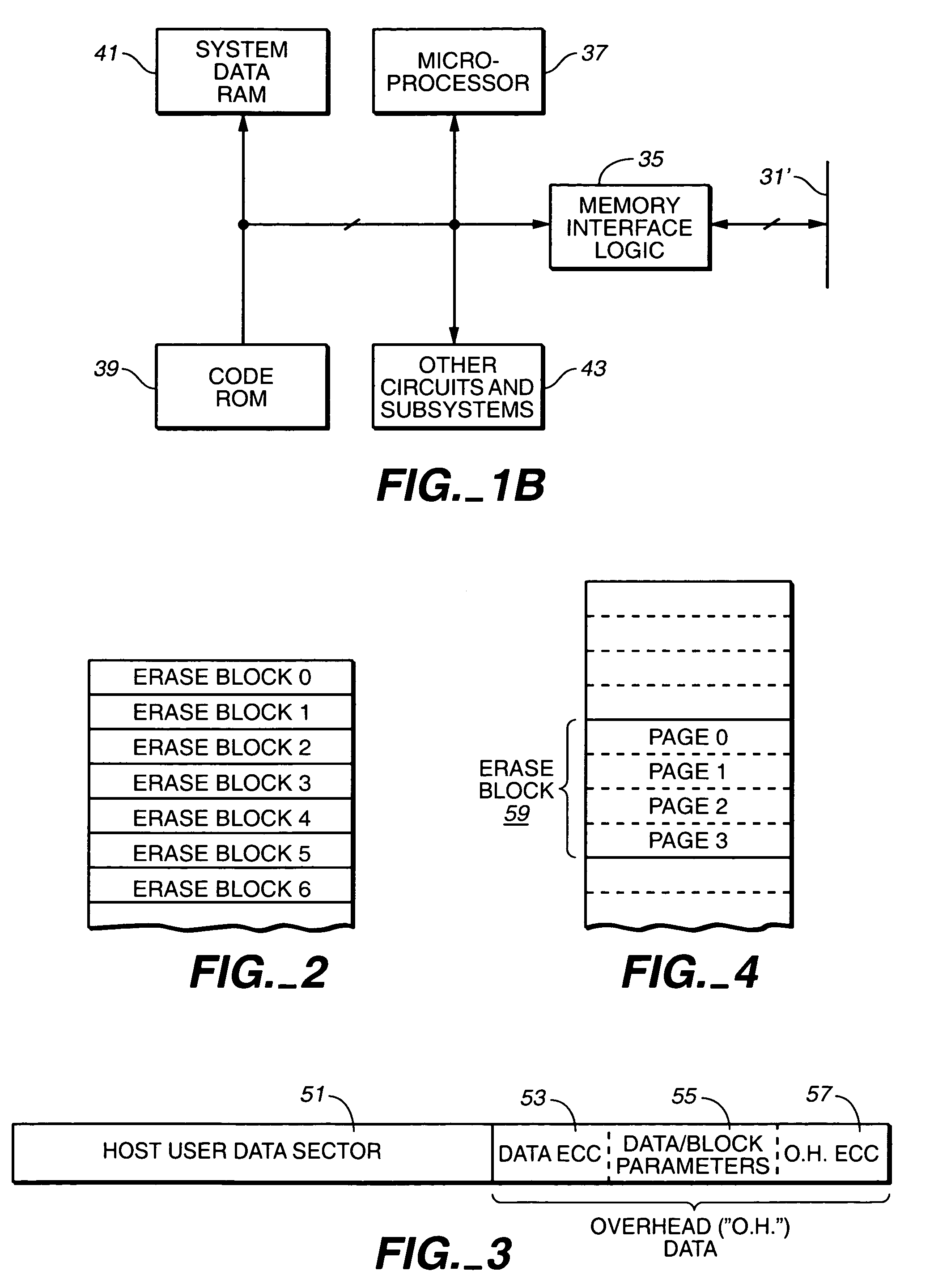Adaptive metablocks
a metablock and a technology of nonvolatile memory, applied in the direction of memory adressing/allocation/relocation, instruments, computing, etc., can solve the problems of less than optimum wear leveling, erroneous data to be read, and storage level shifting
- Summary
- Abstract
- Description
- Claims
- Application Information
AI Technical Summary
Benefits of technology
Problems solved by technology
Method used
Image
Examples
Embodiment Construction
Memory Architectures and Their Operation
[0050]Referring initially to FIG. 1A, a flash memory includes a memory cell array and a controller. In the example shown, two integrated circuit devices (chips) 11 and 13 include an array 15 of memory cells and various logic circuits 17. The logic circuits 17 interface with a controller 19 on a separate chip through data, command and status circuits, and also provide addressing, data transfer and sensing, and other support to the array 13. A number of memory array chips can be from one to many, depending upon the storage capacity provided. A memory cell array may be located on a single chip or may be comprised of memory cells on multiple chips. The controller and part or the entire array can alternatively be combined onto a single integrated circuit chip but this is currently not an economical alternative.
[0051]A typical controller 19 includes a microprocessor 21, a read-only-memory (ROM) 23 primarily to store firmware and a buffer memory (RAM...
PUM
 Login to View More
Login to View More Abstract
Description
Claims
Application Information
 Login to View More
Login to View More - R&D
- Intellectual Property
- Life Sciences
- Materials
- Tech Scout
- Unparalleled Data Quality
- Higher Quality Content
- 60% Fewer Hallucinations
Browse by: Latest US Patents, China's latest patents, Technical Efficacy Thesaurus, Application Domain, Technology Topic, Popular Technical Reports.
© 2025 PatSnap. All rights reserved.Legal|Privacy policy|Modern Slavery Act Transparency Statement|Sitemap|About US| Contact US: help@patsnap.com



